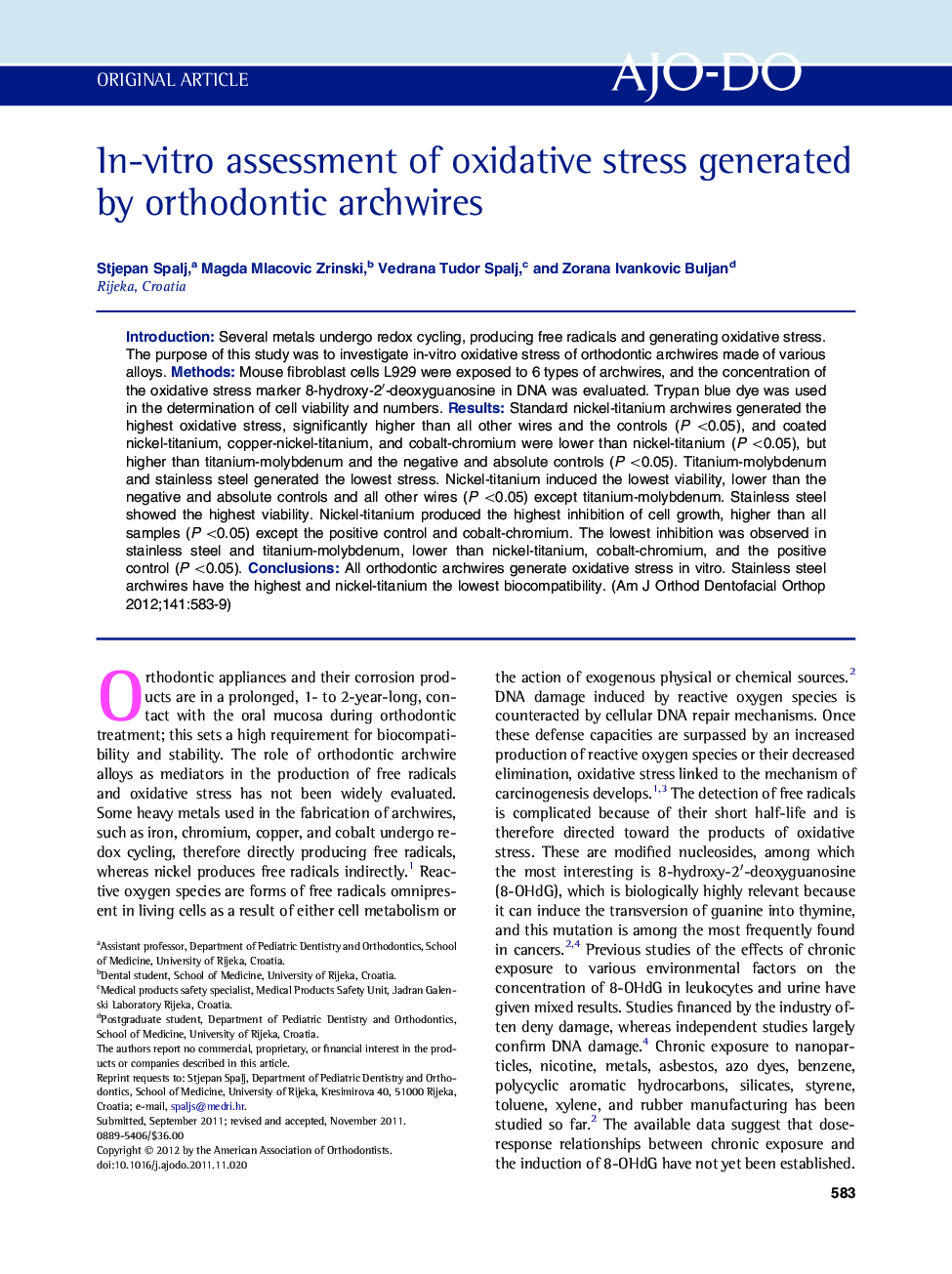| کد مقاله | کد نشریه | سال انتشار | مقاله انگلیسی | نسخه تمام متن |
|---|---|---|---|---|
| 3116985 | 1582728 | 2012 | 7 صفحه PDF | دانلود رایگان |

IntroductionSeveral metals undergo redox cycling, producing free radicals and generating oxidative stress. The purpose of this study was to investigate in-vitro oxidative stress of orthodontic archwires made of various alloys.MethodsMouse fibroblast cells L929 were exposed to 6 types of archwires, and the concentration of the oxidative stress marker 8-hydroxy-2′-deoxyguanosine in DNA was evaluated. Trypan blue dye was used in the determination of cell viability and numbers.ResultsStandard nickel-titanium archwires generated the highest oxidative stress, significantly higher than all other wires and the controls (P <0.05), and coated nickel-titanium, copper-nickel-titanium, and cobalt-chromium were lower than nickel-titanium (P <0.05), but higher than titanium-molybdenum and the negative and absolute controls (P <0.05). Titanium-molybdenum and stainless steel generated the lowest stress. Nickel-titanium induced the lowest viability, lower than the negative and absolute controls and all other wires (P <0.05) except titanium-molybdenum. Stainless steel showed the highest viability. Nickel-titanium produced the highest inhibition of cell growth, higher than all samples (P <0.05) except the positive control and cobalt-chromium. The lowest inhibition was observed in stainless steel and titanium-molybdenum, lower than nickel-titanium, cobalt-chromium, and the positive control (P <0.05).ConclusionsAll orthodontic archwires generate oxidative stress in vitro. Stainless steel archwires have the highest and nickel-titanium the lowest biocompatibility.
Journal: American Journal of Orthodontics and Dentofacial Orthopedics - Volume 141, Issue 5, May 2012, Pages 583–589